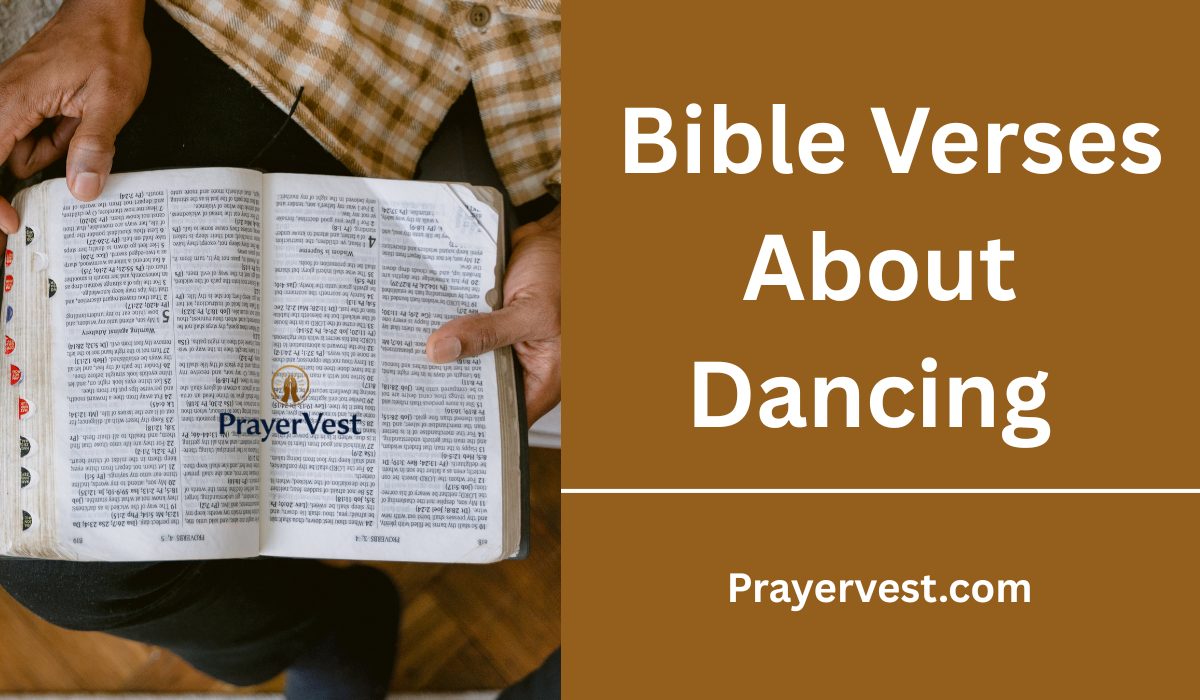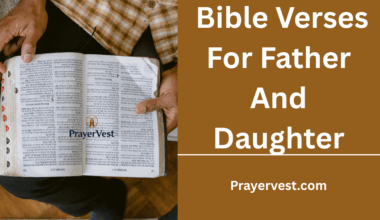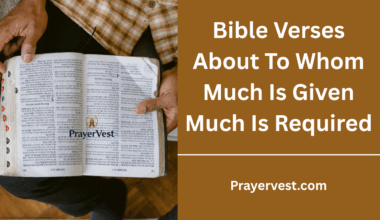In the Bible, dancing is frequently depicted as a colorful way to convey celebration, joy, and praise. Examples of dancing as a natural reaction to God’s goodness, deliverance, and blessings may be found throughout the Old and New Testaments.
Dance is portrayed as an authentic means of honoring the Lord and using the body in worship alongside the spirit, whether it is for expressing thanks, celebrating successes, or reveling in God’s presence. It serves as a reminder that worship can be a dynamic, physical manifestation of our devotion rather than just being limited to words or songs.
Numerous biblical personalities celebrated God’s powerful deeds with dance. For example, when the Ark of the Covenant was brought to Jerusalem, King David is renowned for his energetic dancing before the Lord.
These examples demonstrate how dance, in which the intensity of movement reflects the depth of passion in the heart, can be a genuine expression of admiration. These biblical examples teach us that God appreciates genuine displays of thankfulness and gladness, which enable believers to honor Him in unique and intimate ways.


Examining Bible passages pertaining to dance gives us ideas for incorporating this worship style into our spiritual lives. These verses exhort us to embrace the freedom that comes from being in God’s presence, to celebrate completely, and to publicly show our faith. Biblically-based dancing can strengthen our relationship with God, promote joy, and serve as a reminder that worship involves our entire being—heart, mind, and body—whether it is performed in private devotion, group worship, or celebrations.
40 Inspiring Bible Verses About Dancing (2025)
1. Psalm 149:3
“Let them praise his name with dancing, making melody to him with tambourine and lyre.”
This verse celebrates the joy and freedom of expressing worship through dance. The psalmist encourages God’s people to lift their hearts and bodies in praise, demonstrating that worship is not only a matter of words but also of movement. Dancing becomes a physical expression of gratitude and reverence, inviting believers to celebrate God’s goodness wholeheartedly.
2. 2 Samuel 6:14
“And David danced before the Lord with all his might; and David was wearing a linen ephod.”
David’s exuberant dance before the Ark of the Covenant highlights uninhibited worship. He set aside fear of judgment or pride to honor God fully. This passage teaches that worship involves wholehearted devotion, even when it challenges societal expectations. Dancing here symbolizes surrender, joy, and reverence—a complete offering of one’s spirit to God.
3. Ecclesiastes 3:4
“A time to weep, and a time to laugh; a time to mourn, and a time to dance.”
This verse reminds us that life has seasons, each with its appropriate expression. Dancing represents moments of celebration and victory, a natural response to God’s blessings. By embracing joy openly, believers acknowledge God’s hand in life’s transitions and honor the rhythm of divine timing.
4. Psalm 30:11
“You have turned for me my mourning into dancing; you have loosed my sackcloth and clothed me with gladness.”
Here, dancing is portrayed as a response to God’s deliverance and restoration. The psalmist experiences a transformation from sorrow to joy, recognizing that God’s intervention brings freedom and celebration. This verse emphasizes that dancing can symbolize spiritual renewal and gratitude for God’s faithfulness.
5. Jeremiah 31:13
“Then shall the young women rejoice in the dance, and the young men and the old together; I will turn their mourning into joy.”
In this prophetic verse, God promises a future where sorrow is replaced by communal celebration. Dancing signifies not only personal joy but also the restoration of an entire community. It illustrates that God’s blessings inspire collective worship and rejoicing, drawing people together in shared gratitude and hope.
6. Psalm 87:7
“All my fountains are in you.”
While brief, this verse captures the source of joy and inspiration for worship. Just as dancing flows from the inner springs of gratitude and devotion, believers are reminded that true celebration originates from God. Our acts of praise, including dance, are fueled by His presence and sustenance in our lives.
7. Exodus 15:20
“Then Miriam the prophetess, the sister of Aaron, took a tambourine in her hand, and all the women went out after her with tambourines and dancing.”
Miriam leads the women of Israel in dance following the miraculous crossing of the Red Sea. This celebratory dance illustrates communal worship and thanksgiving, showing that dance can be a vehicle for expressing collective joy and divine victory. It also emphasizes the role of women as leaders in praising God.
8. Psalm 149:4
“For the Lord takes pleasure in his people; he adorns the humble with salvation.”
Dancing in praise is not only an expression of joy but also a reflection of God’s delight in His people. This verse links humility with celebration, teaching that genuine worship comes from hearts surrendered to God. True dancing in the Spirit stems from gratitude and recognition of His saving grace.
9. Judges 21:21
“And when you go, you shall find the daughters of Shiloh come out to dance in dances.”
This verse illustrates that dance was woven into cultural and religious life in biblical times. Dancing in this context was both a form of social interaction and an expression of delight. It demonstrates how movement and celebration were integral to communal experiences, reflecting joy, freedom, and social bonding.
10. Psalm 149:5
“Let the saints be joyful in glory; let them sing aloud on their beds.”
Though focused on singing, this verse complements the theme of expressive worship. Joy can manifest through music, song, and dance alike. It highlights that God’s people are called to celebrate His glory in every aspect of life, whether privately in contemplation or publicly in communal praise.
11. Luke 15:25
“Now his older son was in the field, and as he came and drew near to the house, he heard music and dancing.”
In the parable of the prodigal son, dancing accompanies the celebration of reconciliation and restoration. This passage teaches that joy, often expressed through dance, is a fitting response to God’s mercy and forgiveness. Dancing becomes a symbol of rejoicing over spiritual renewal and restoration.
12. Psalm 100:2
“Serve the Lord with gladness! Come into his presence with singing!”
While singing is highlighted, gladness encompasses physical expression as well, including dance. Worship is holistic, engaging heart, mind, and body. Dancing before the Lord embodies wholehearted devotion and serves as a tangible manifestation of inner joy and praise.
13. 1 Samuel 18:6
“And the women sang to one another as they celebrated, ‘Saul has struck down his thousands, and David his ten thousands.’”
Celebratory dance and song mark the acknowledgment of God’s blessings and victories. Here, the women’s rejoicing through movement and melody underscores the cultural and spiritual role of dance as a medium for public celebration and praise. It reinforces the idea that dance conveys triumph and gratitude.
14. Psalm 30:12
“That my glory may sing your praise and not be silent. O Lord my God, I will give thanks to you forever!”
Dancing can be viewed as a form of “singing” with the body. This verse emphasizes continuous gratitude and the expression of praise in all ways possible. When words fall short, dance becomes a profound language of the soul, celebrating God’s glory and enduring love.
15. Isaiah 55:12
“For you shall go out in joy and be led forth in peace; the mountains and the hills before you shall break forth into singing, and all the trees of the field shall clap their hands.”
This poetic verse personifies nature rejoicing, encouraging believers to reflect God’s creation in their worship. Dancing aligns with this imagery as a natural, joyful response to God’s provision and peace. Movement becomes a reflection of the harmony between God, creation, and human celebration.
16. Psalm 149:2
“Let Israel be glad in his Maker; let the children of Zion rejoice in their King.”
This verse emphasizes rejoicing in God as an essential expression of worship. Dancing serves as a natural extension of this joy, allowing believers to physically express gratitude and devotion. It reminds us that worship engages both heart and body in celebrating the Creator’s goodness.
17. Exodus 15:21
“And Miriam sang to them: ‘Sing to the Lord, for he has triumphed gloriously; the horse and his rider he has thrown into the sea.’”
Miriam’s song is accompanied by dance, marking a moment of divine victory. Her movement reflects exuberance and freedom, teaching that dancing in worship can amplify the celebration of God’s miraculous deeds. Joyful dance becomes a public testimony of faith and gratitude.
18. Jeremiah 31:4
“Again I will build you, and you shall be built, O virgin of Israel! Again you shall adorn yourself with tambourines and go forth in the dances of the merrymakers.”
This prophetic verse highlights restoration and renewal. Dancing symbolizes the joy and vitality restored to God’s people after times of hardship. It reminds believers that physical expressions of worship can reflect spiritual renewal and divine blessing.
19. Psalm 68:25
“The singers went before, the musicians followed after, in the midst of the maidens playing tambourines.”
This passage demonstrates the integration of music and dance in worship. Dancing alongside music enhances the celebratory atmosphere, emphasizing communal praise. It shows that dance can unite believers in a shared experience of joy and adoration of God.
20. Psalm 150:4
“Praise him with tambourine and dance; praise him with strings and pipe!”
Here, dance is directly commanded as a form of praise. This verse validates movement as a spiritual discipline and expression of worship. It encourages believers to engage their bodies in glorifying God, demonstrating that celebration is an active, not passive, act of devotion.
21. Judges 11:34
“And Jephthah came to his house at Mizpah. And behold, his daughter came out to meet him with tambourines and with dancing.”
Dancing in this context marks a significant moment of familial and communal interaction. It underscores how dance can communicate joy, welcome, and connection. Scripture portrays dance as an expressive medium for celebrating life’s important events.
22. Psalm 149:6
“Let the high praises of God be in their throats and two-edged swords in their hands.”
Although symbolic, the “high praises” include physical expression, often manifested in dance. This verse highlights the energy and power behind worship, where movement can channel devotion and spiritual fervor. Dancing becomes both an offering and a declaration of God’s might.
23. 1 Chronicles 15:29
“And as the ark of the covenant of the Lord came into the city of David, Michal the daughter of Saul looked out of the window and saw King David leaping and dancing before the Lord.”
David’s uninhibited dance demonstrates wholehearted worship. Despite criticism, he prioritizes honoring God over social perception. This teaches that dancing in worship is an act of courage, joy, and personal devotion.
24. Psalm 92:4
“For you, O Lord, have made me glad by your work; at the works of your hands I sing for joy.”
Joy at God’s creation naturally leads to celebratory expressions, including dance. This verse reminds us that worship encompasses response to God’s goodness and handiwork, making dance a fitting reflection of gratitude and wonder.
25. Psalm 71:23
“My lips will shout for joy, when I sing praise to you; my soul also, which you have redeemed.”
While focusing on singing, this verse encompasses all forms of joyful expression. Dancing becomes a physical manifestation of the redeemed soul’s gratitude, demonstrating that worship is holistic—engaging body, mind, and spirit.
26. Psalm 33:3
“Sing to him a new song; play skillfully on the strings, with loud shouts.”
Though primarily about music, this verse encourages expressive celebration that naturally includes dance. Worship through movement complements joyful sound, allowing believers to engage their bodies in praising God creatively and wholeheartedly.
27. Psalm 149:1
“Praise the Lord! Sing to the Lord a new song, his praise in the assembly of the godly!”
Dancing often accompanies singing in communal worship. This verse reminds us that worship is a collective experience, and movement alongside music strengthens unity among believers while glorifying God with exuberant joy.
28. Exodus 32:19-20
“And as soon as he came near the camp and saw the calf and the dancing, Moses’ anger burned.”
This passage shows the importance of intent in dance. While dancing is a joyful expression, it must honor God. Misguided celebration, even through dance, can lead to consequences. It teaches that worship should be sincere, rooted in reverence and obedience.
29. 2 Kings 3:15
“And Elisha said, ‘Bring me a musician.’ And when the musician played, the hand of the Lord came upon him.”
Music and movement can invite God’s presence in powerful ways. While not directly referencing dance, this verse illustrates how worship through rhythmic expression—song, instrument, or movement—can be spiritually transformative and invite divine intervention.
30. Nehemiah 12:43
“And on that day they offered great sacrifices, rejoicing because God had given them great joy. The women and children also rejoiced. And the joy of Jerusalem was heard far away.”
Rejoicing includes dancing as a natural expression of communal celebration. This verse demonstrates that dance in worship amplifies joy and unites the community in recognizing God’s blessings.
31. Psalm 47:1
“Clap your hands, all peoples! Shout to God with loud songs of joy!”
Clapping and shouting often accompany dance in worship, forming a full-bodied expression of praise. This verse encourages believers to engage physically in worship, combining movement and sound to honor God energetically.
32. Psalm 98:4
“Make a joyful noise to the Lord, all the earth; break forth into joyous song and sing praises!”
Dance complements joyous noise and singing. Expressing praise through movement enhances the celebratory nature of worship, reflecting the delight and reverence God deserves from all creation.
33. 1 Chronicles 16:16
“And he remembered his covenant forever, the word that he commanded, for a thousand generations.”
Celebratory dance often accompanies remembrance of God’s covenant. Worshiping through movement connects past acts of divine faithfulness to present expressions of joy, deepening the spiritual significance of dancing in praise.
34. Psalm 118:24
“This is the day that the Lord has made; let us rejoice and be glad in it.”
Each day is an opportunity to express joy through dance. Celebrating God’s creation and provision with movement transforms ordinary moments into acts of worship and gratitude.
35. Jeremiah 31:12
“They shall come and sing aloud on the height of Zion, and they shall be radiant over the goodness of the Lord.”
Radiance and joy are often expressed through dance. This verse inspires believers to embody praise physically, letting movement reflect inner delight and thanksgiving for God’s goodness.
36. Psalm 145:7
“They shall pour forth the fame of your abundant goodness and shall sing aloud of your righteousness.”
Dance enhances the proclamation of God’s goodness. Physical expression amplifies verbal praise, demonstrating that worship engages both body and soul in sharing gratitude.
37. Judges 21:21
“And when you go, you shall find the daughters of Shiloh come out to dance in dances.”
This verse highlights cultural and communal joy through dance. It shows that movement can mark significant celebrations and create spaces for shared delight in God’s blessings.
38. Psalm 149:6
“Let the high praises of God be in their throats, and two-edged swords in their hands.”
Dance and praise combine to express spiritual strength and devotion. This verse reminds believers that energetic worship communicates both joy and reverence, symbolizing readiness to honor God with all aspects of life.
39. Psalm 150:1
“Praise the Lord! Praise God in his sanctuary; praise him in his mighty heavens!”
Worship in every setting can include dance. This verse encourages believers to express adoration physically as well as vocally, making praise a holistic and immersive experience.
40. Psalm 150:6
“Let everything that has breath praise the Lord! Praise the Lord!”
All creation is called to praise God, including through movement and dance. This concluding verse emphasizes that worship is universal, and dance serves as a vibrant, joyful declaration of life, breath, and gratitude toward the Creator.
Conclusion
Finally, the dancing-related Bible verses serve as a reminder that worship can be a full-bodied manifestation of happiness, thankfulness, and celebration. Dancing before the Lord is a spiritual reaction to His goodness, faithfulness, and powerful deeds; it is more than just a physical exercise. Scripture demonstrates that movement can effectively communicate the deepest feelings of the heart, from King David’s joyful worship to the collective gladness in God’s presence. By incorporating dancing into worship, believers can demonstrate their commitment in ways that words alone would not be able to, engaging their body and soul.
In the end, the Bible teaches that dancing is a joyful way to acknowledge God’s benefits and sovereignty. It inspires believers to delight in the freedom they have found in Him, give thanks, and celebrate successes. We foster an attitude of joy, thankfulness, and unwavering praise by accepting dancing as a form of worship, which fortifies our faith and uplifts those around us. Dancing becomes a meaningful and uplifting method to honor God in every stage of life via personal expression and biblical examples.






